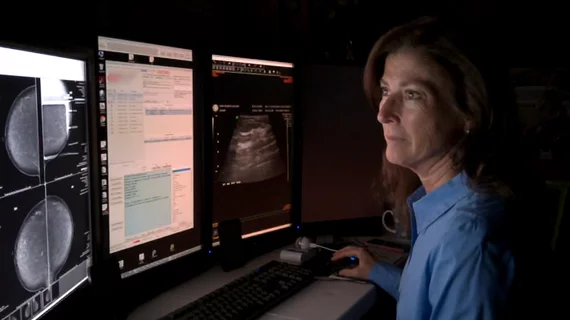Radiology departments could do much more to support research by female radiologists
Seemingly countless studies have shown radiology’s ongoing problems with diversity. How does this impact women within the specialty who focus a lot of their time and energy into producing groundbreaking research?
The authors of a new study published by Academic Radiology sent an electronic survey to members of the American Association for Women Radiologists (AAWR) in September and October 2017, asking them about challenges they encounter when conducting radiology research and working to publish that research. All respondents were female radiologists who had completed all training.
“Past articles on disparities in radiology have outlined a range of approaches, including strong mentorship early in radiologists’ careers, initiatives to ensure the visibility and recognition of accomplishments by individuals from underrepresented groups, as well as development of programs to provide executive coaching and training experiences,” wrote lead author Andrew B. Rosenkrantz, MD, MPA, of the department of radiology at NYU Langone Medical Center in New York, and colleagues. “Nonetheless there is a paucity of suggestions specifically addressing disparities in radiology research and publication, which entails its own set of barriers and potential responses. Therefore, the aim of this study was to assess challenges to radiology research and publication by female radiologists, as well as possible strategies for overcoming these challenges.”
Overall, 89 AAWR members completed the survey. More than 61 percent said they were interested in conducting radiology research. More than 60 percent said their departments expected them to pursue research, while more than 80 percent said they were expected to pursue educational activities. Also, more than 56 percent of respondents said they feel their research is valued by their department, and more than 47 percent said they “receive appropriate credit” for their research from their departments.
“Female radiologists were largely interested in conducting research, although were more often expected by their departments to participate in educational activities,” the authors wrote. “Moreover, women overall did not feel that their work was fully valued or received full credit from their departments.”
Diving deeper, the authors found that just 22.7 percent of respondents said they receive enough time to do their research. Just 23.9 percent feel their department works to specifically support the research efforts done by women.
Also, when respondents were provided seven options to choose from, the three options selected the most frequently as being “most helpful to enhancing research success” were having more time to focus on research, working with personal research mentors and “earlier career training in research methodology.”
Rosenkrantz and colleagues wrote that imaging leaders should pursue initiatives that work to tear down perceived barriers to achieving improved diversity. By showing female radiologists that they truly value their research, for example, leaders can help women get more involved in radiology research.

